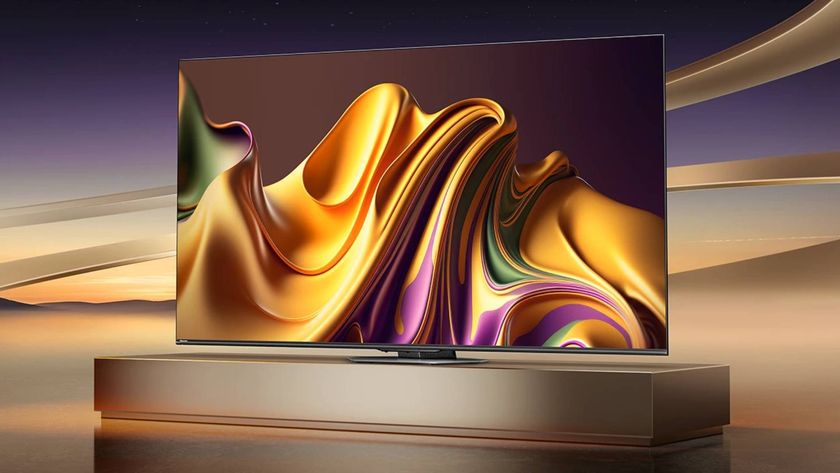1080p vs 1440p: What’s the best value gaming monitor resolution in 2023?
More pixels or more speed? For that is the question!
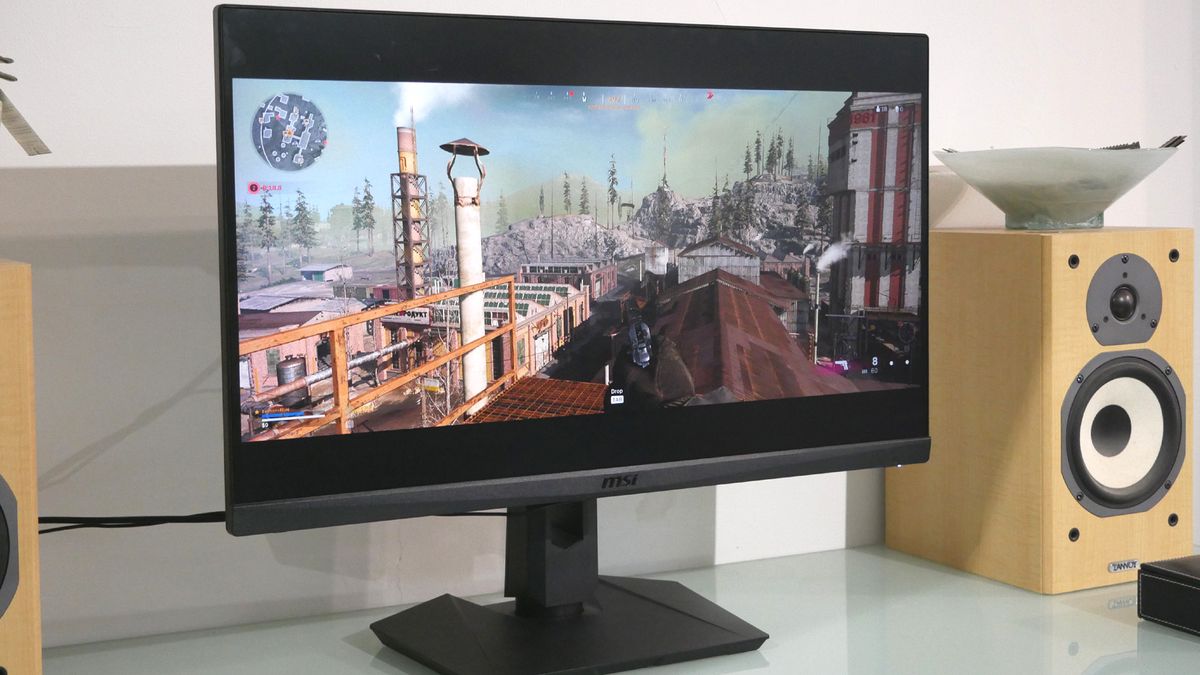
Can we all agree that 4K and other exotic high resolutions don’t represent good value gaming? After all, even if you can afford one of the best gaming monitors, you’ve also got to factor in a megabucks graphics card to enable vaguely decent frame rates on a PC. As for the latest high-end consoles, Microsoft’s Xbox Series X and the Sony PS5, their 4K support ain’t what it’s cracked up to be.
So, the question is, what resolution is the best value for money for a gaming monitor in 2023: 1080p or 1440p? Now that’s a toughie, but you might just find one of the best cheap gaming monitors can accommodate and help you decide.
Speed vs fidelity
Now, the first conundrum you have to consider is whether 120Hz-plus refresh is essential. To put it another way, would you favour, say, 1440p at 60Hz or 1080p at 144Hz? If you prefer visual detail to smooth rendering and low latency, go for 1440p at 60Hz. Want your games to feel slick and responsive and don’t mind a softer, less photo-realistic image? Choose 1080p at 144Hz.
Arguably, of course, much depends on the genre of gaming in question. If you’re exclusively into online shooters and esports, then it’s a bit of a no-brainer; you want as many frames as possible. That’ll be 1080p, then. At the other end of the scale, if all you ever do is play ancient strategy titles like Age of Empires, well, we’d recommend a cheap 60Hz 1440p panel. You’re not really getting much benefit out of 360Hz. Job jobbed.
Back in the mainstream, for the more typical gamer who enjoys more than one genre, it’s a trickier balancing act. For us, the obvious answer is to go with 1440p and around 144Hz. That’s a great compromise between speed and response on one hand and visual detail on the other. The point to emphasise is just how much better 1440p looks compared to 1080p. It’s not that 1080p is garbage. But once you’ve seen how much more detail 1440p delivers, 1080p looks a little dated, soft and blurry.
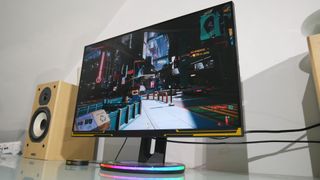
Compromises to be made
Price-wise, currently you can just about squeak in under $250 or £250 for 1440p with 144Hz if you shop around. The lower you go, of course, the more compromises you’ll have to make. What kind of compromises? Panel tech is an obvious candidate. Many cheaper monitors use VA rather than IPS panels. VA isn’t necessarily a bad thing. Indeed, it has some advantages over IPS, including superior contrast. But especially when it comes to cheaper VA panels, you give up quite a bit when it comes to viewing angles and pixel response.
Unfortunately, quoted specifications in that regard aren’t hugely reliable. All monitor manufacturers tend to quote the same viewing angles for both IPS and VA panels, so that’s no help at all. Response ratings aren’t always totally reliable, either. That said, any monitor with a quoted grey-to-grey response time of 2ms or better should be fine. Some VA monitors with 4ms ratings can be fairly quick, subjectively, others not so much. With IPS, there aren’t the same concerns. Even the cheapest IPS gaming panels tend to have at least tolerable pixel response.
Sign up to the 12DOVE Newsletter
Weekly digests, tales from the communities you love, and more
Colors and contrasts
Basic brightness, believe it or not, is another factor to consider. Again, manufacturer quoted numbers aren’t entirely consistent guides. However, any monitor rated at 400 nits or more should be plenty bright enough, anything below 300 nits will likely be pretty dim, while models that fall somewhere in between will vary considerably.
As for color coverage, that’s less of a concern for gaming. Sure, it’s nice to have 95 percent-plus coverage of gamuts like AdobeRGB and DCI-P3, but it’s not a huge benefit for gaming. The same applies to HDR support; true HDR capability still costs megabucks. So, if you see the likes of ‘HDR10’ in the spec list, don’t get excited. It doesn’t mean the screen will be HDR capable, it just means it can process an HDR signal.
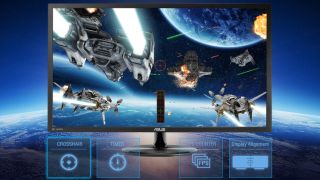
All important pricing...
In terms of how those panel quality factors should influence your choice between 1080p and 1440p, well, it goes something like this: 1440p monitors are inherently more expensive. So, if your budget is really tight, you may have to choose between a brighter 1080p model and a dimmer 1440p screen. Or perhaps a low-end VA 1440p panel with suspect pixel response and a higher-quality 1080p IPS option. To an extent, you can apply that thinking to refresh rate, too. For a given budget, you’ll get a higher refresh rate from the 1080p option.
Ultimately, there are no easy answers. But as a general rule, we’d lean towards 1440p. Taking refresh rate as an obvious example, your returns begin to diminish above 144Hz. We’d much, much rather have 1440p and 144Hz than 1080p and 240Hz, for instance. We’d also lean towards a dimmer 1440p panel over a brighter 1080p monitor, too.
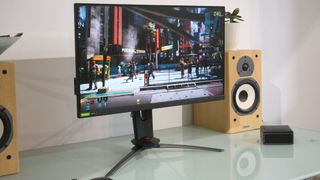
It‘s also worth bearing in mind when making this comparison that 1440p is generally much nicer than 1080p for general computing duties. It gives you more desktop real estate to work with. And it makes for sharper, clearer fonts.
All that said, one thing you shouldn’t have to worry about is connectivity. Even cheaper monitors tend to have both DisplayPort and HDMI connectivity and given we’re not talking about ultra-high resolutions compatibility will be broad whether you want to connect to a PC or are after an Xbox Series X monitor.
So, there you have it, our case for 1440p over 1080p. There will always be exceptions, but we would lean to 1440p.
Looking for a different kind of gaming display? Check out our guides to the best gaming TV, best TV for PS5, and best 120Hz 4K TV.
A serious dissertation on the finer points of input lag and overshoot followed by a forensic examination of AI-accelerated temporal upscaling. Such is a routine day in the working life of long-time tech wordsmith, Jeremy Laird. Along with GamesRadar, Jeremy’s 15-year back catalogue includes a host of tech and gaming outlets, including TechRadar and PC Gamer, not to mention contributions to mainstream media from the Independent to the Evening Standard. Complimenting Jeremy’s debilitating addiction to all kinds of digital hardware, he is also afflicted by an obsession with and a significant occupational sideline in cars and automotive technology.


